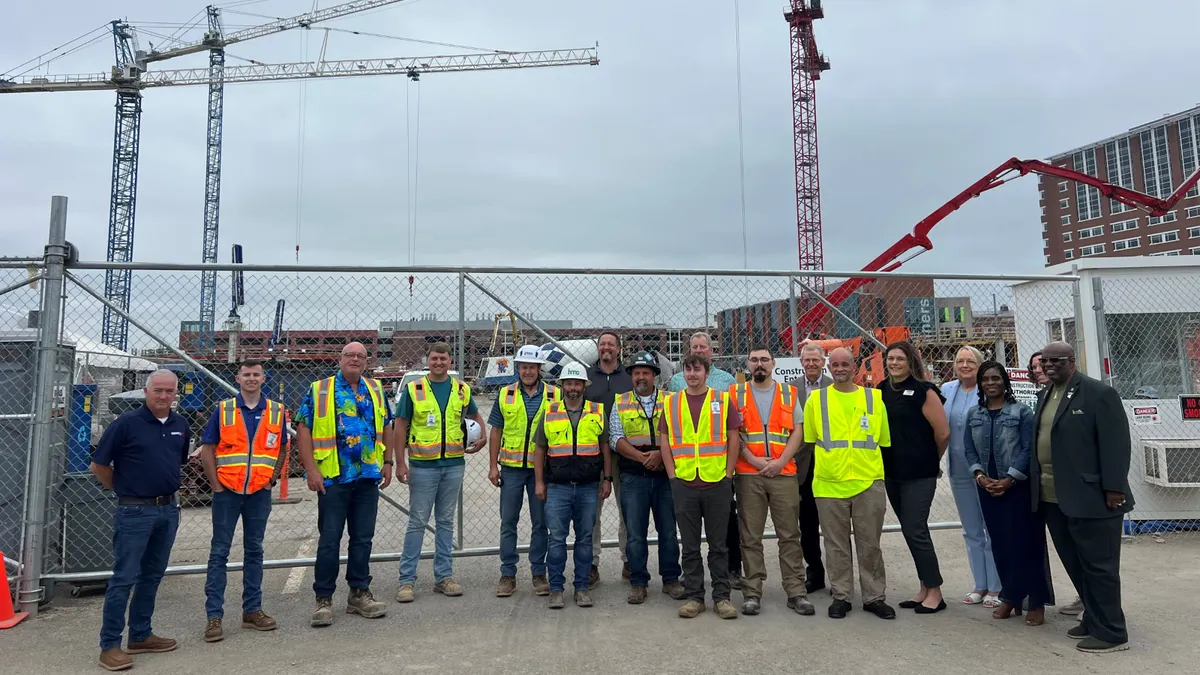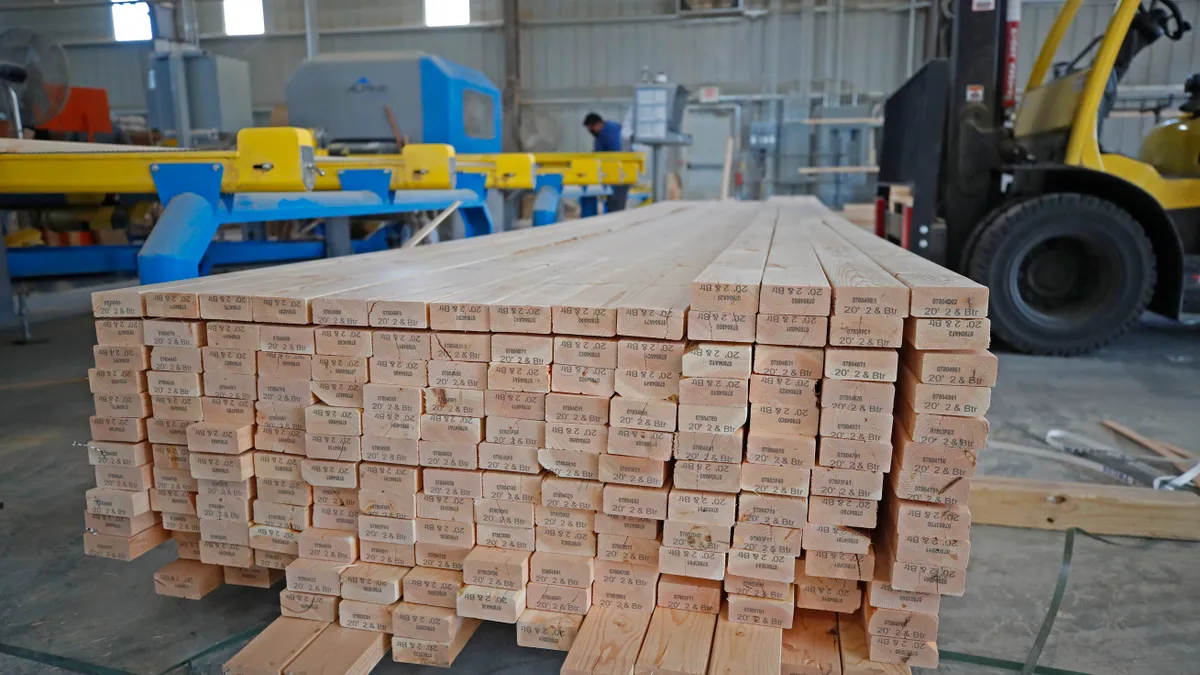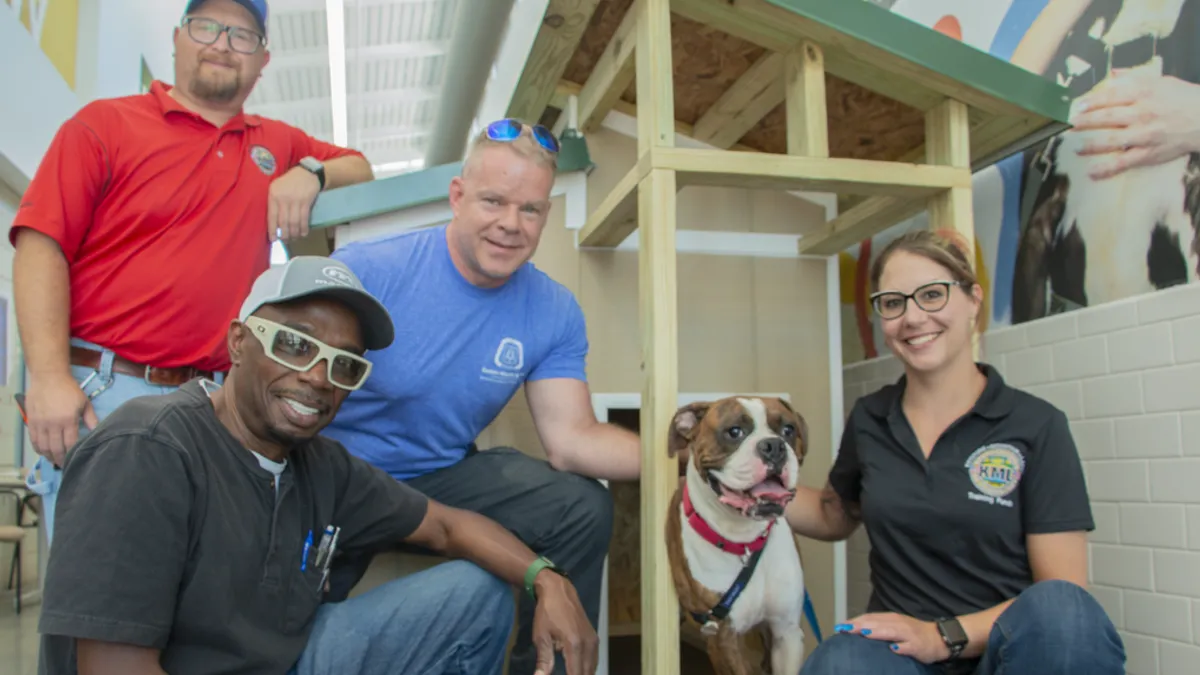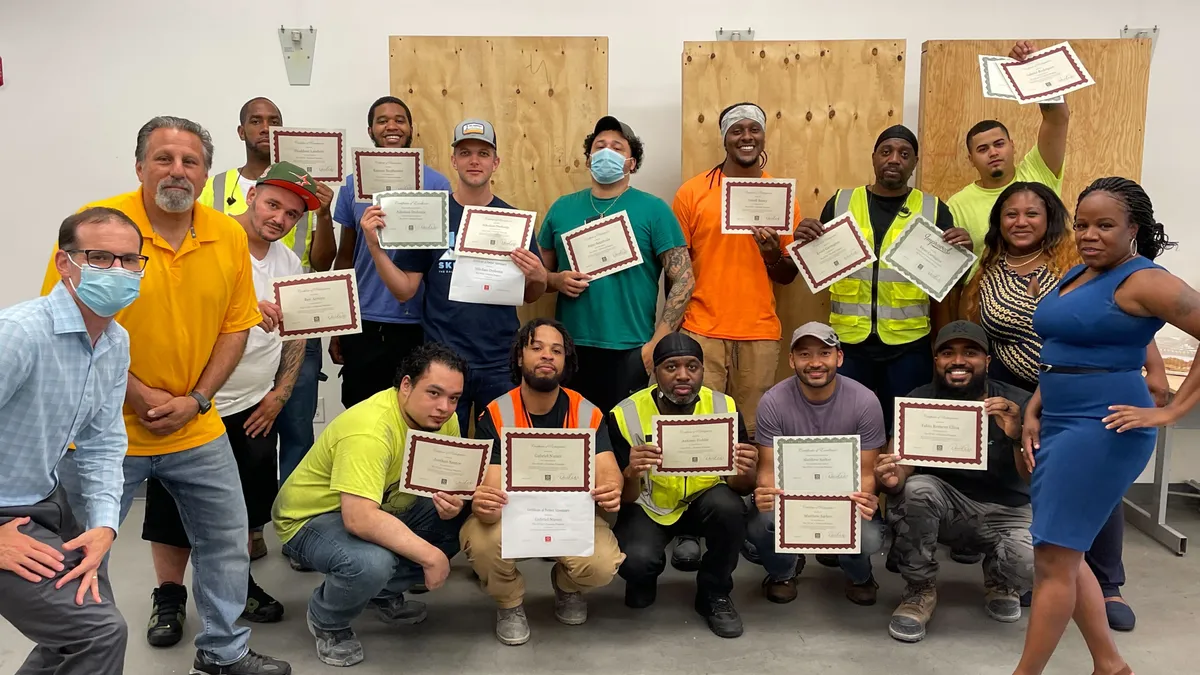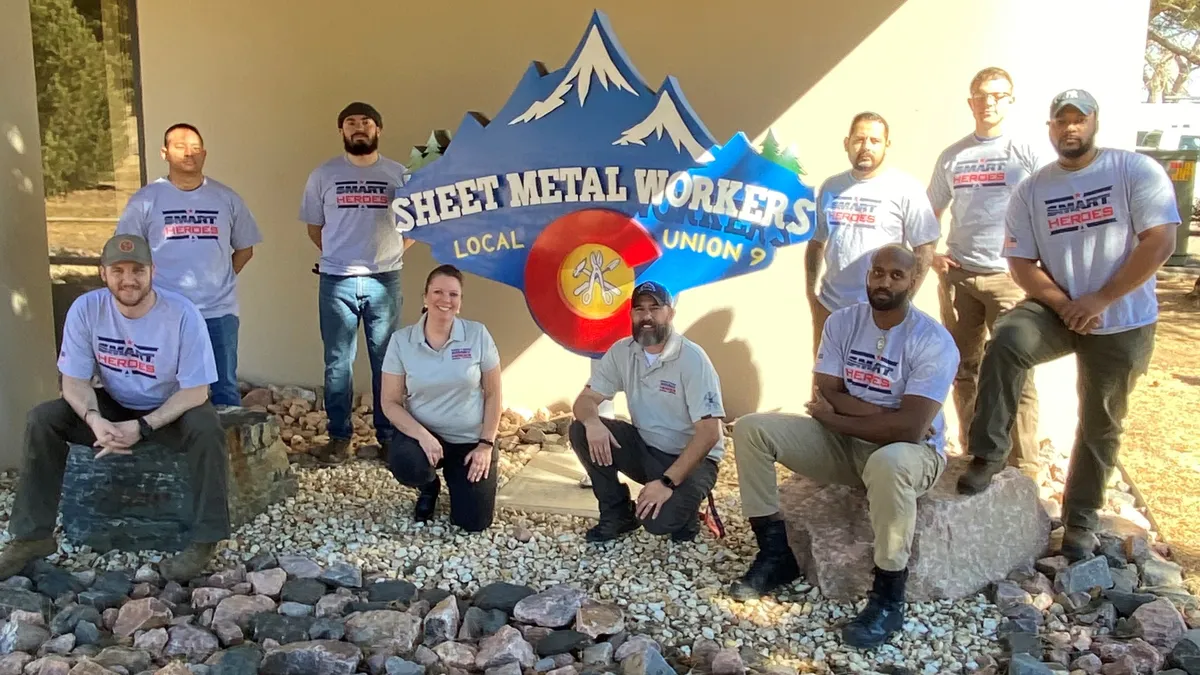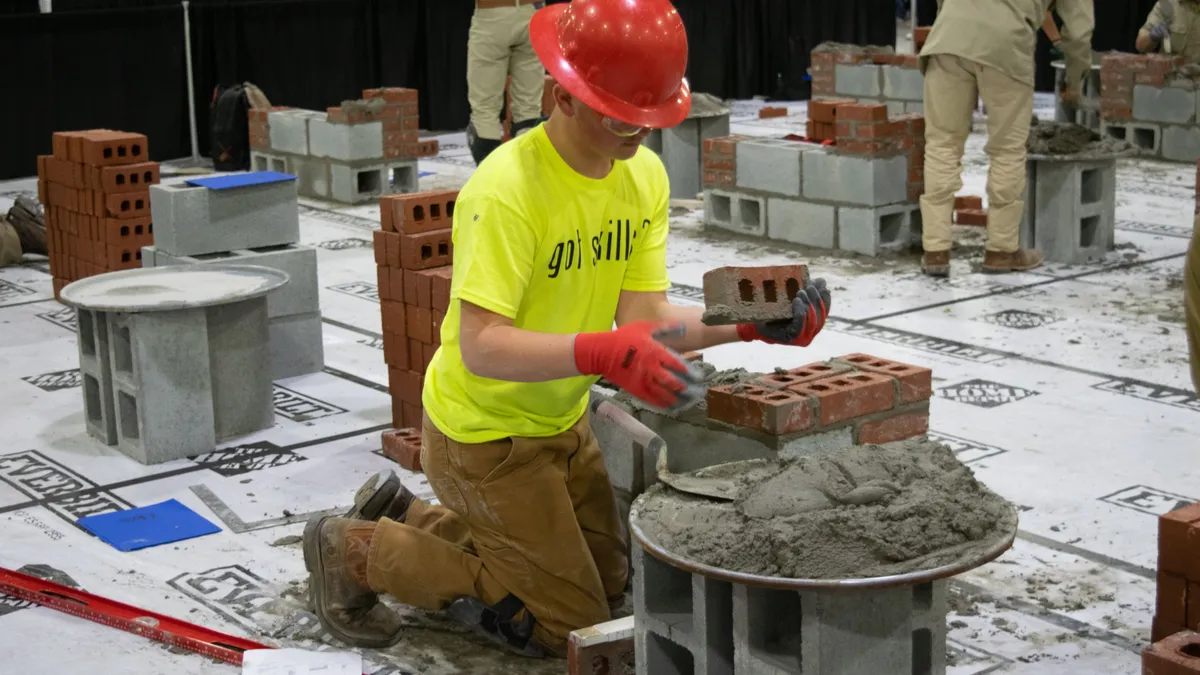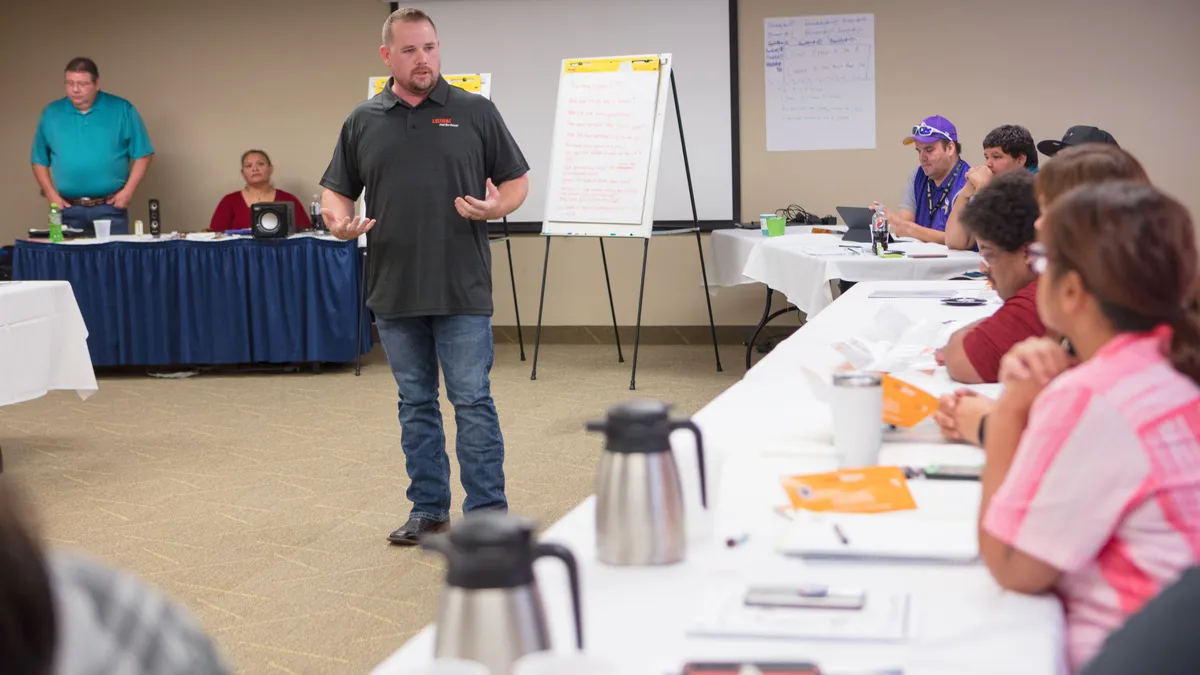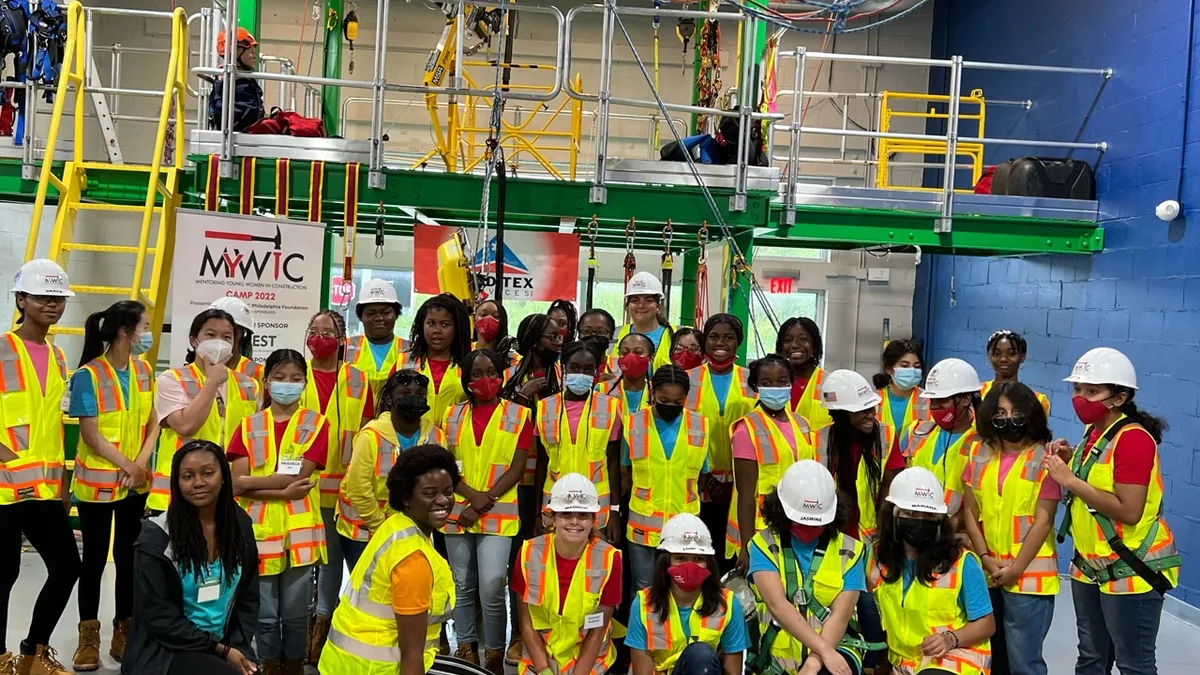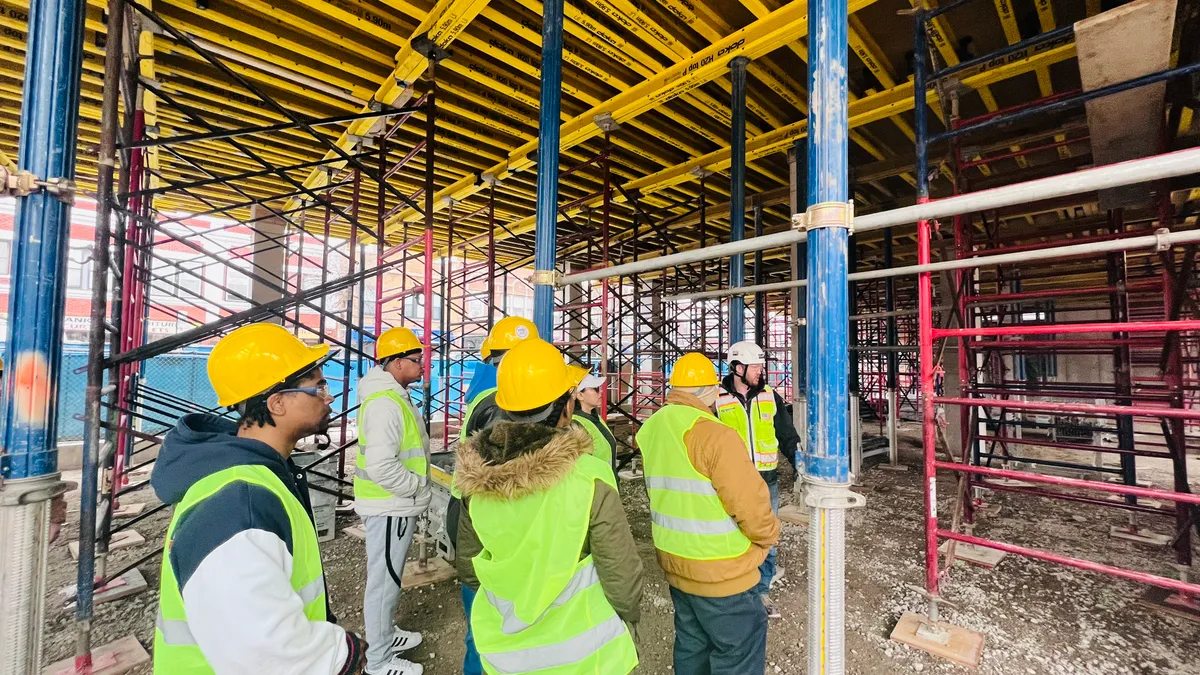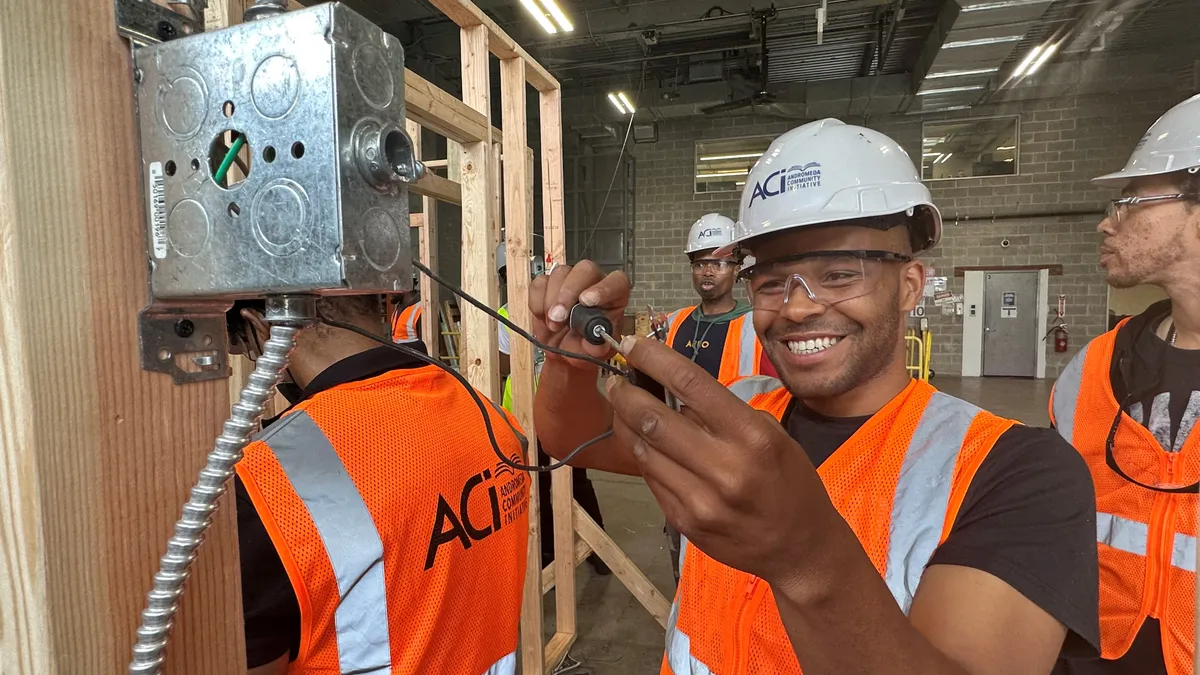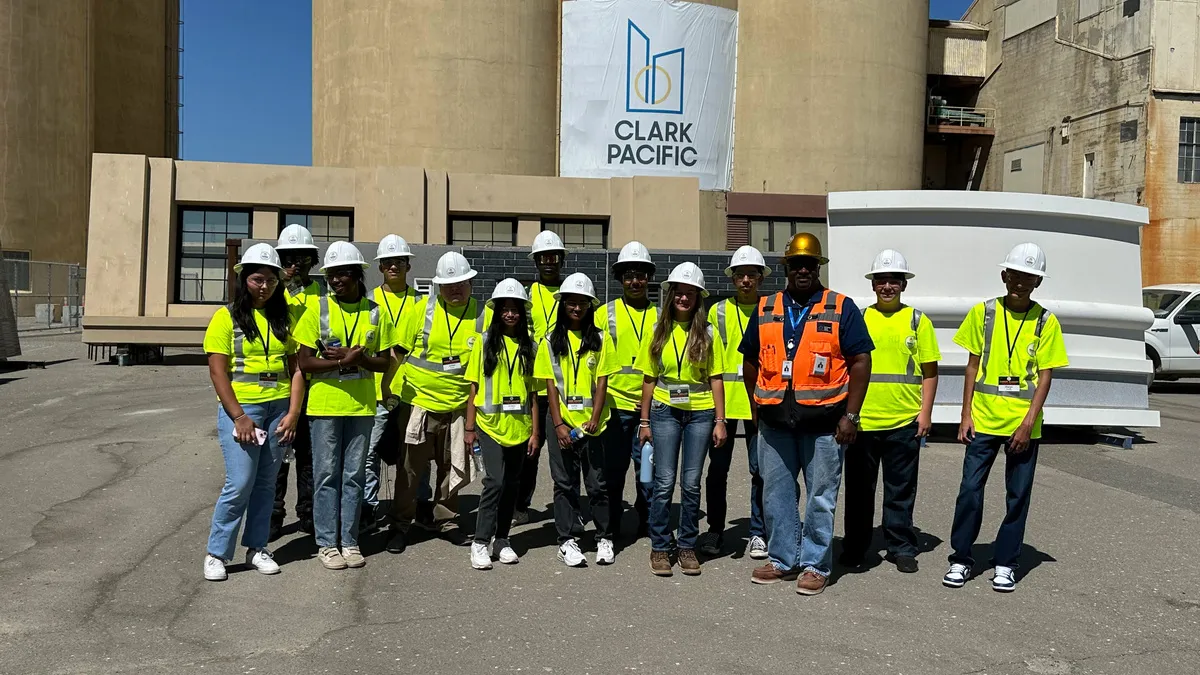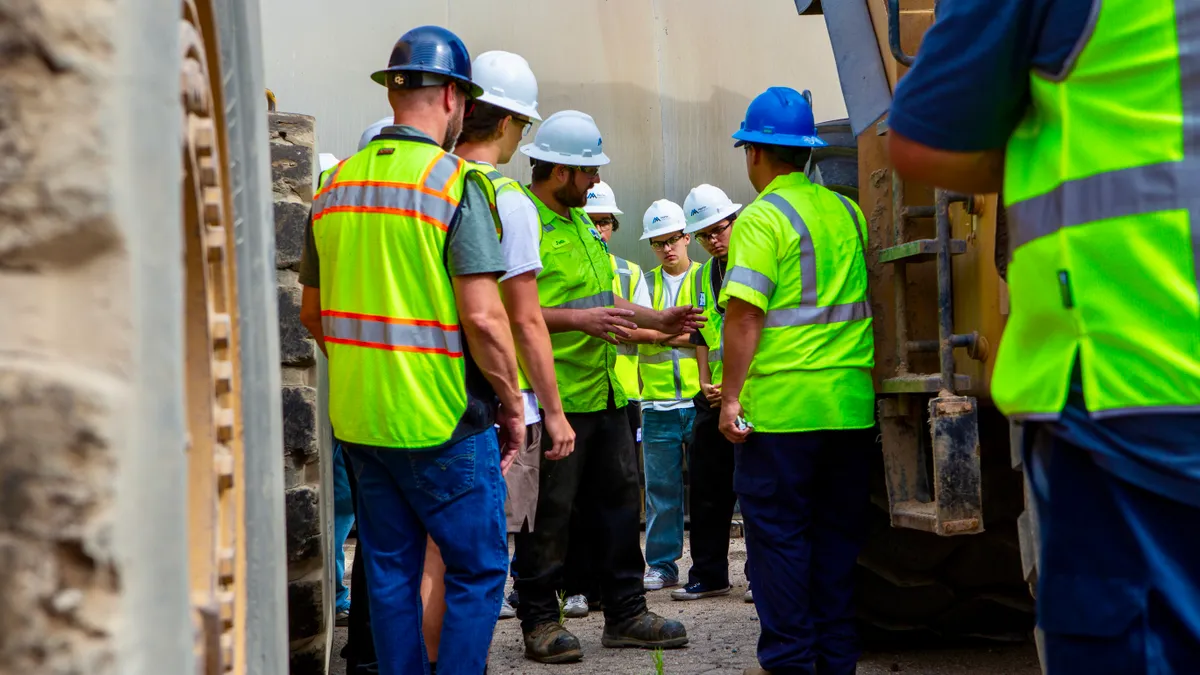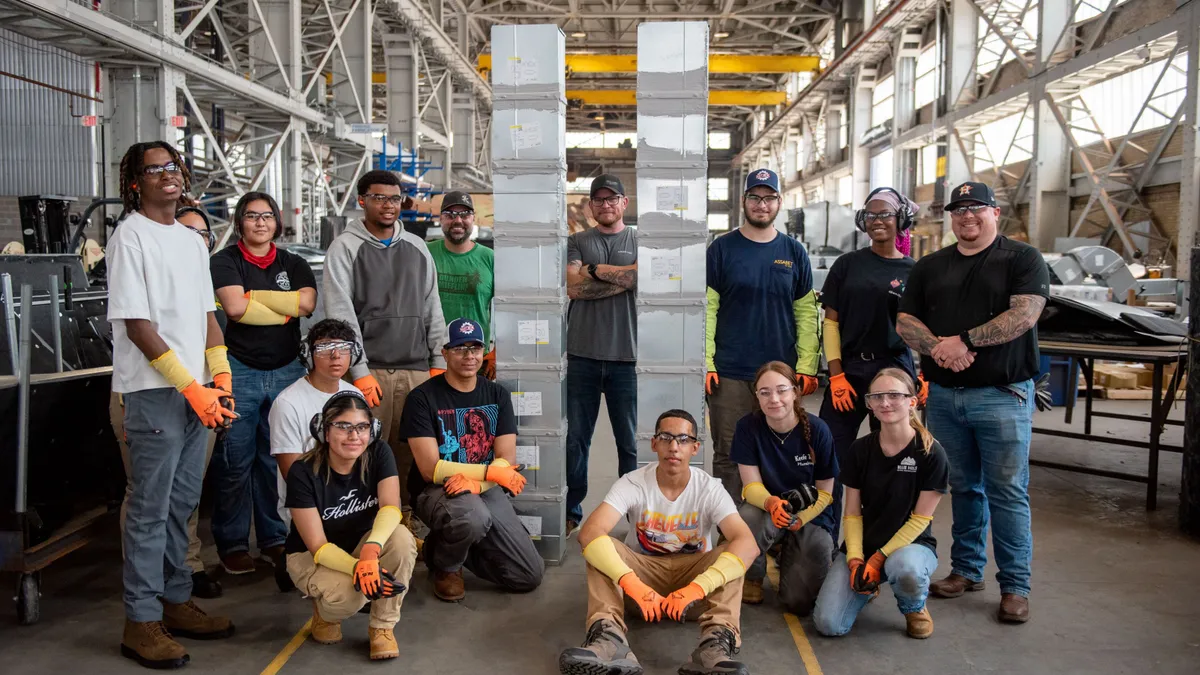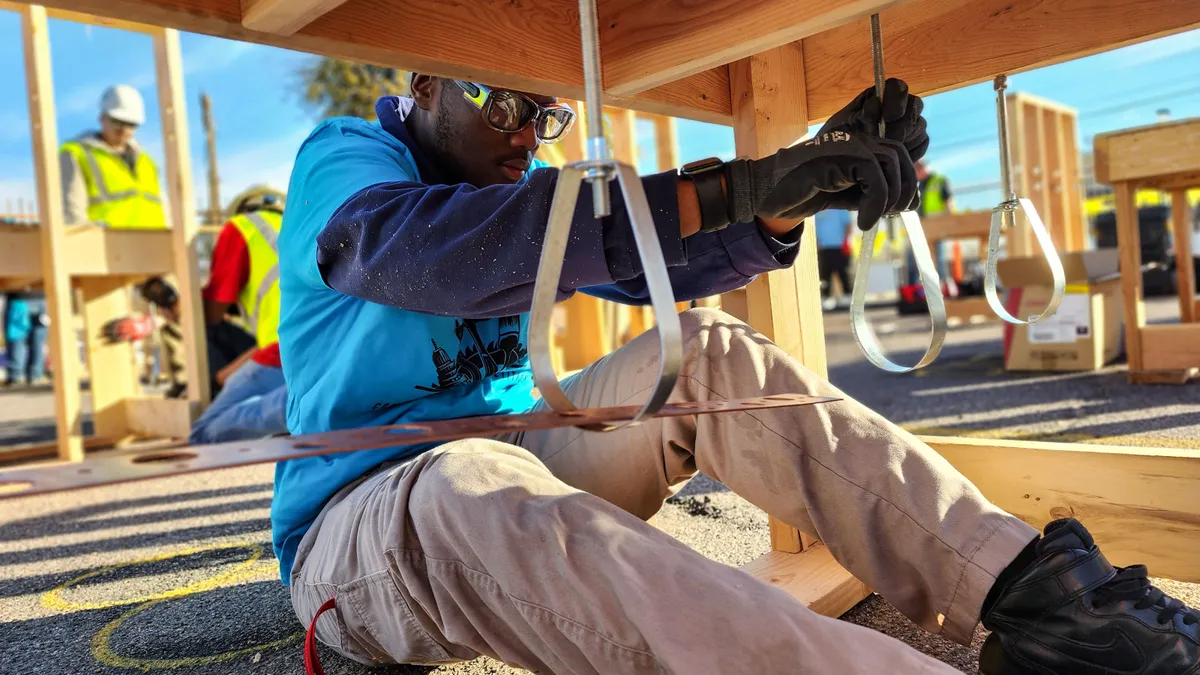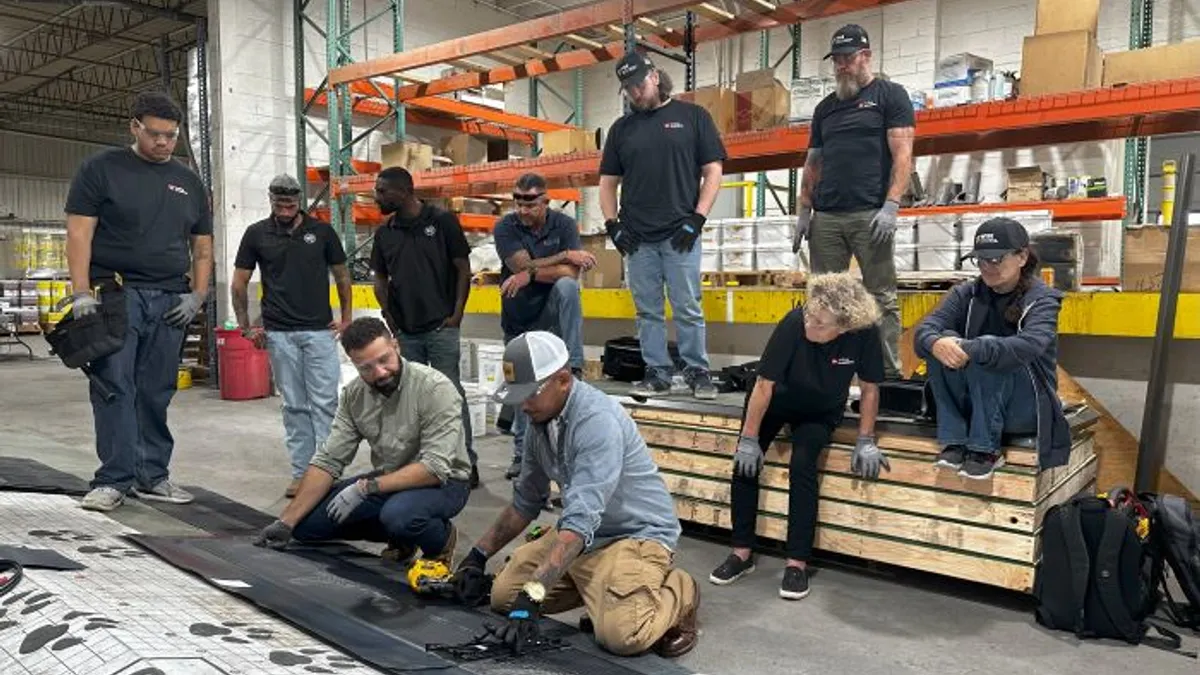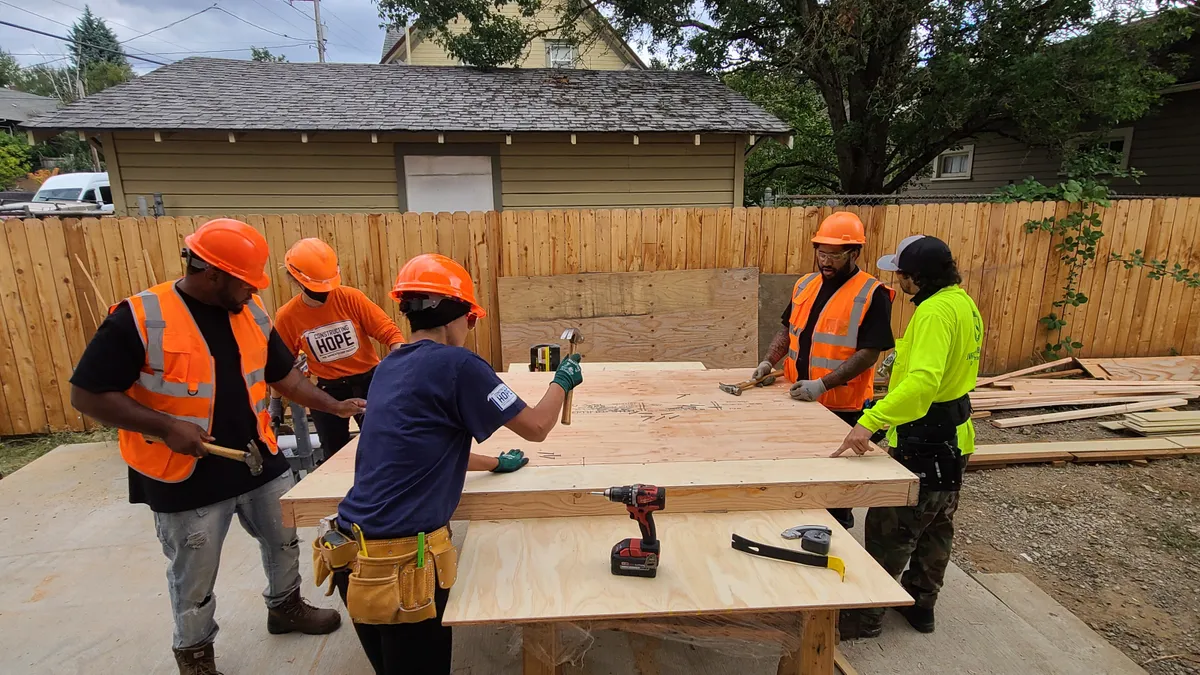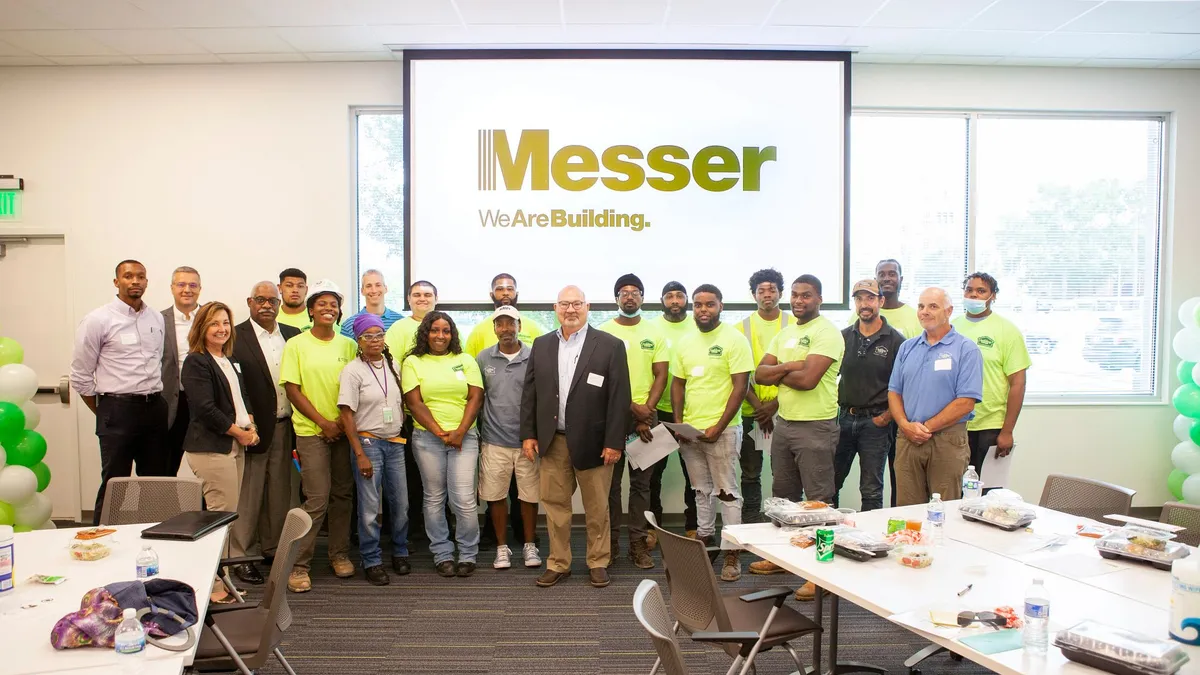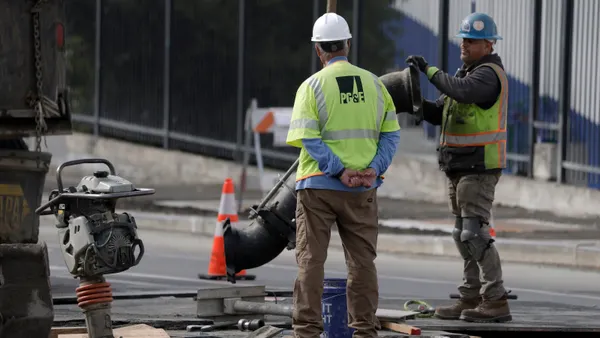The construction industry faces a stark shortage of workers, but programs and people across the country are working at the local level to solve the problem. This series highlights those efforts helping to recruit the next generation of construction pros. Read previous entries here.
Do you know of a group that is helping to attract workers to the construction industry? Let us know.
When Chicago-based The Walsh Group won a contract on the $781 million Cancer and Advanced Ambulatory Building at the University of Kentucky, firm leaders pitched the school on a program the contractor had utilized before.
For over 25 years, Walsh has wielded pre-apprenticeship programs on projects, recruiting locals and giving them on-the-job training with their subcontracting partners, said Muhummad Starks, project manager for Walsh.
“We've kind of been leveraging our projects to advertise what's awesome about construction for the last 25 years,” Starks told Construction Dive.
The Lexington, Kentucky-based university and Walsh, along with Goodwill Kentucky, a nonprofit that helps low-income people find jobs, announced a partnership that launched Aug. 1 designed to provide training in technical skills and exposure to the industry. The program will serve as a pathway to registered apprenticeship opportunities, potentially setting up participants to pursue a full apprenticeship and a career in the trades.
The 550,000-square-foot project broke ground in April 2024, and is slated to open in 2027.
Cohorts and training
The program is designed to run a half-dozen, eight-week cohorts of pre-apprentices through the course over two years, Chris Zarvas, project manager, told Construction Dive. At the end of each stint, ideally both the pre-apprentice and the subcontractor on the job would agree, Zarvas said, to employ the worker full-time.
Starks said the first step is ensuring subcontractors have a large enough scope of work to train a pre-apprentice. That’s not always the case, he said. For example, the first cohort will entail three workers, as the subcontractors mostly perform electrical, HVAC, plumbing and concrete work.
But going forward, work such as carpentry or glazing will require cohorts to be larger and supply the pre-apprentices with more work to do, Starks said.
“When I set this up, I had the luxury of calling up a couple of project managers that had run a pre-apprenticeship program out here,” Starks said. The Walsh experts who had run similar programs were instrumental in setting up the first week.
For the first full day, Starks said, the team focuses on safety. Then it's a jobsite walkaround and identifying hazards, quality inspections, a visit with the superintendent to talk about how Walsh builds and finally, training with jobsite-specific tools and software.
Goodwill connections
Though most people know Goodwill for its retail locations, the organization’s goal is actually to help people find pathways out of poverty, said Alycia Tidrick, director of strategic partnerships for Goodwill Kentucky.
Sometimes Goodwill aids with job placement for workers through the retail stores, but it is opportunities like Walsh’s pre-apprenticeship program that work best, Tidrick said.
“We of course love employer partnerships, but we really value those opportunities where there's also a training component and where we can kind of bring together fantastic employers, great opportunities with career pathways and that training piece of it as well,” Tidrick said.
Many individuals that Goodwill helps face stiff obstacles to employment, such as a justice-involved past or battles with addiction, said Jennifer Bergman, regional director of career services for Goodwill Kentucky. Construction’s dire need for workers makes the industry a good fit for people seeking employment opportunities of all kinds.
“We’re looking at individuals who have come to the table and really tried hard to make a difference and change their life,” Bergman said. “It gives them a new chance, it gives them a second chance. It could be their 10th chance, but they're ready for this. And it gives them not only a possible job, but something that can turn into a wonderful career.”
Part of why Walsh developed the pre-apprenticeship program is that the firm knows all too well how serious the labor shortage in construction is. Starks noted the exodus of experienced tradespeople as they age into retirement faster than contractors can hire the next generation of workers.
“We're all dealing with the same problem,” Starks said. “I think the need for people working in construction who have experience drives the subcontractors to know it's in their best interest to be a part of [something like this].”
Clarification: This story has been updated to reflect the specific end use of the University of Kentucky project.



